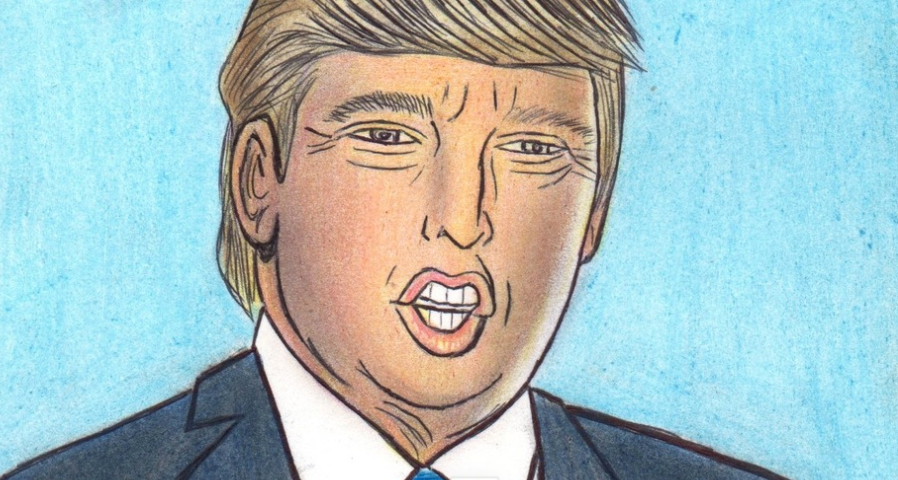We’re all on edge here with a week left before the election.
We need to think positively. Don’t downplay the positive abilities of positive thinking.
The only reason we have to believe Trump won’t win is the polls. There is plenty of reason to believe the polls are totally and completely wrong.
Jonathan Jakubowski and Christos A. Makridis write for The Hill:
We predict that President Trump is going to win the 2020 presidential election — and win big.
While the majority of the polls suggest that Democratic presidential nominee Joe Biden is leading, or at best that it’s close, those polls suffer from at least three problems.
First, the tone of the questions. There is significant evidence from behavioral psychology that suggests that the way a question is framed predetermines the range of potential answers. In fact, Gallup has found that respondents can answer very differently to questions with the same topic even in the same survey based on the language that’s used. And the use of metaphors can even dwarf the importance of pre-existing differences between Republicans and Democrats.
One of the reasons respondents do that is because of a tendency to give socially desirable answers, which was the case especially during the 2016 election. Most people don’t like confrontation, so the easiest, albeit not necessarily the best, solution is to avoid it. Right now, saying that you’re voting for Trump/Pence is often not the socially desirable answer. In fact, a recent poll by the Cato Institute suggests that nearly two-thirds of Americans say that the political climate is sufficiently harsh that they don’t want to give their genuine opinion about politics.
Second, the sample of respondents. Who responds depends on many factors, including the medium (e.g., landline versus cellphone), the location, the sample size and demographic factors. Moreover, the pool of respondents is not necessarily the same as the pool of likely voters. Even though election polls all contain a margin of error, that margin of error is unreliable if the underlying sample does not reflect the population. Researchers have also identified self-screening as the major contributing factor to the polling failures during the 2016 election cycle.
For example, distrust of pollsters also leads to lower response rates for Trump supporters. Rasmussen finds that 17 percent of likely U.S. voters who “strongly approve” of the job President Trump is doing say they are less likely to let others know how they intend to vote in the upcoming election. By comparison, only 8 percent of those who “strongly disapprove” of the president’s performance say the same.
While proper sampling methodology matters more than the size, having a representative sample with enough people still helps considerably. Robert Cahaly of the Trafalgar Group notes how their work to create minimum samples sizes of 1,000 voters, added to their work to doggedly pursue the “quiet Trump voter,” led to Trafalgar being one of the most successful battleground polling firms in the country in 2016. Cahaly explains that “we don’t do a state with less than a thousand. You see these polls, 400, 500, 600 people for a state. I don’t buy that. Your margin of error is far too high.”
Third, the content of the current news cycle. What’s going on in a particular moment in time can influence voter attitudes, particularly in swing states. For example, the recent revelation of Hunter Biden’s hidden emails on his laptop, coupled with the link to his father, has come at an opportune time for the president. Moreover, if the economic recovery continues, the good news may continue putting wind in Trump’s sails.
Admittedly, no poll is perfect. That’s why RealClearPolitics takes a step forward by “averaging out” these errors across polls. But “averaging out” only works when errors are made in both directions. Here, many polls make errors primarily in one direction, so the average will still reflect some of the biases that exist.
Their conclusion is: Trump win. Big Trump win.
Regarding all of the metrics outside of the polls, Scott Adams has some things to say about that.
Adams is a Trump cheerleader, but his analysis this morning of factors not related to polling showing a Trump win is worth consideration.
Trump is on a glide path to reelection, NXIVM update, Philly riots help Trump, Supreme Court, coffee https://t.co/bnoybI53BB
— Scott Adams (@ScottAdamsSays) October 27, 2020
He went through a list of signs (starting at 11:30 in the above video) showing that the polls are the only indicator saying that Trump is not winning:
- Enthusiasm
- Signage
- Sitting president got more than 75% of primary votes
- Trump is in the same place in the polls as he was against Hillary
- He’s surging at the right time
- New voter registration is heavily Republican
- Trump’s ground game more aggressive
- Biden is going to the wrong states (Georgia), not many places
- High levels of black support for Trump
- Suburban mothers will like Amy Coney Barrett
- Incumbent advantage generally
- Democrats split on packing the Supreme Court
- Biden is decomposing – “Voting for Biden is like going into the woods at night for a hike with a flashlight with a dying battery” -Joe Rogan (paraphrased)
It is clear to me that Trump is going to win.
I don’t have any doubt about that, right now.
What is not clear to me is if he will remain in the White House after he wins.
That is much less obvious.
We know that the Democrats are planning major voter fraud using mail-in ballots.
How successful will that be?
No one knows.
It depends primarily on how hard Trump actually wins on election night. If he wins really hard, that will mean he can credibly claim victory, and the ball is then passed to Democrats to start complaining and hoaxing.
So: stay positive.
If Trump is overthrown, we’ll figure out a new plan.


